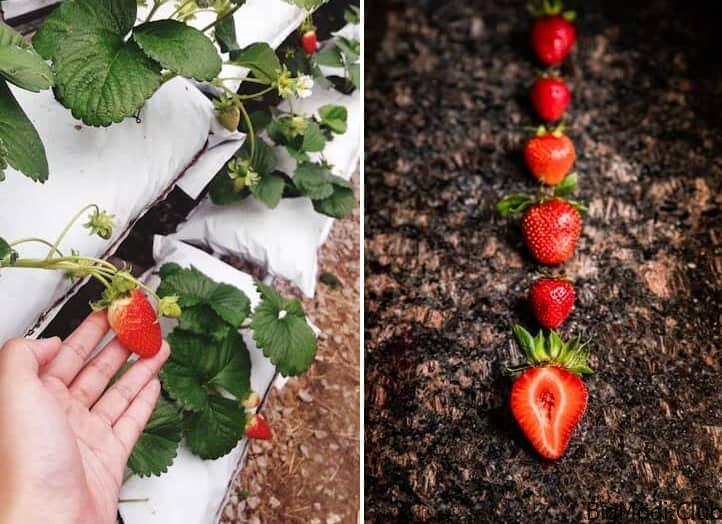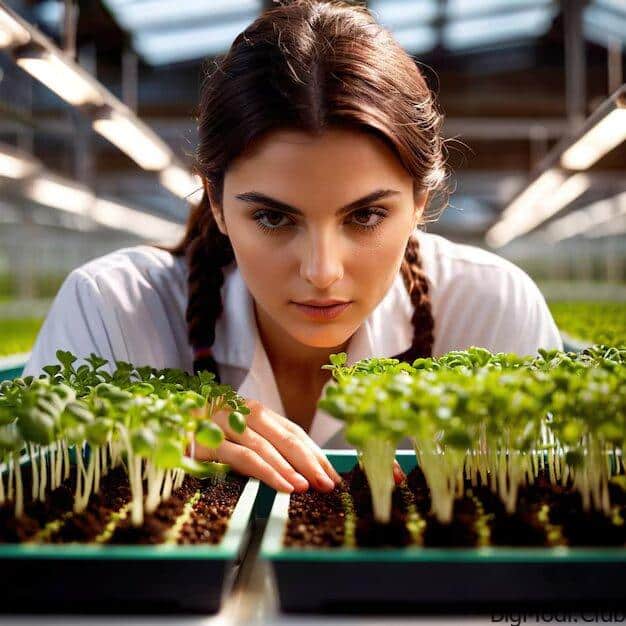Cultivating strawberries in plastic bags is an innovative and space-efficient method that’s gaining popularity among gardeners, especially those with limited space. This method offers numerous benefits, including better control over soil quality, reduced risk of pests and diseases, and ease of mobility. Here’s an in-depth guide on how to successfully grow strawberries in plastic bags.
1. Choosing the Right Strawberry Variety
- Day-Neutral Varieties: These are ideal for bag cultivation because they produce fruit throughout the growing season. Popular options include ‘Seascape’ and ‘Albion.’
- June-Bearing Varieties: While these yield a large harvest in a short period, they might be more challenging in bags due to their space and nutrient demands.
- Ever-bearing Varieties: These produce two main crops per year and are also suitable for bag cultivation, offering a balance between yield and maintenance.
2. Selecting the Plastic Bags
- Material: Opt for durable, UV-resistant plastic bags to withstand outdoor conditions. Heavy-duty polyethylene bags work well.
- Size: Choose bags that are at least 10-12 inches deep and wide enough to accommodate multiple plants. A 5-gallon size is generally sufficient.
- Color: Light-colored bags reflect sunlight, keeping the roots cooler, which is beneficial for strawberries.
3. Preparing the Soil Mix
- Soil Composition: Use a well-draining mix with equal parts of compost, peat moss, and perlite. This mix provides the right balance of nutrients, aeration, and moisture retention.
- Fertilization: Incorporate a slow-release fertilizer into the soil mix before planting. Strawberries benefit from a balanced fertilizer with an NPK ratio of around 10-10-10.
- pH Levels: Strawberries prefer slightly acidic soil with a pH between 5.5 and 6.5. Test the soil and adjust as necessary using sulfur or lime.
4. Planting Strawberries in Plastic Bags
- Bag Preparation: Poke small drainage holes at the bottom of the bags to prevent waterlogging. Cut X-shaped slits along the sides of the bags for planting.
- Planting Depth: Place the strawberry plants so that the crowns are just above the soil line. Burying the crown too deep can lead to rot.
- Spacing: Space the plants 8-10 inches apart within the bag to allow for adequate root growth and air circulation.
5. Watering and Irrigation
- Watering Needs: Strawberries in plastic bags require consistent moisture. Water them regularly, but ensure the soil is not waterlogged.
- Drip Irrigation: Installing a drip irrigation system can help maintain consistent moisture levels, especially during hot weather. Ensure the water reaches all the roots evenly.
- Mulching: Add a layer of straw or shredded leaves on top of the soil to retain moisture and regulate temperature.
6. Managing Pests and Diseases
- Pest Control: Common pests like aphids and spider mites can be managed with organic insecticidal soap or neem oil. The enclosed environment of a plastic bag can help reduce pest issues.
- Disease Prevention: Good air circulation, proper watering, and healthy soil are key to preventing fungal diseases like powdery mildew and root rot. Avoid overhead watering to minimize leaf moisture.
7. Harvesting and Maintenance
- Harvesting: Pick strawberries when they are fully red and ripe. Regular harvesting encourages more fruit production.
- Pruning: Remove any runners that develop if you want to concentrate the plant’s energy on producing fruit. Alternatively, you can propagate the runners to start new plants.
- Fertilizing: After the initial fruiting, side-dress with a balanced fertilizer to support continued growth and fruiting.
8. Winter Care
- Insulating Bags: In colder climates, move the bags to a sheltered area or cover them with insulating material like burlap to protect the roots from freezing.
- Dormancy: Strawberries naturally go dormant in winter. Reduce watering and allow the plants to rest. In spring, remove any dead leaves and start regular care.
9. Advantages of Growing Strawberries in Plastic Bags
- Space Efficiency: Ideal for urban gardening or small spaces, plastic bags can be hung or placed on balconies and patios.
- Mobility: Easily move the bags to optimize sunlight exposure or protect them from harsh weather conditions.
- Soil Control: Growing in bags allows precise control over the soil environment, reducing the risks associated with poor garden soil.
10. Challenges and Solutions
- Overheating: Black plastic bags can absorb too much heat, potentially harming the roots. Use light-colored bags or provide shade during peak heat.
- Water Retention: Plastic bags can either dry out too quickly or retain too much water. Regular monitoring and adjusting your watering schedule will help maintain the ideal moisture balance.
- Nutrient Leaching: Fertilizers may leach out with frequent watering, so it’s crucial to replenish nutrients periodically.
FAQs:
1. Can you grow strawberries in a bag?
Yes, you can grow strawberries in a bag. This method is ideal for gardeners with limited space. Planting strawberries in bags allows you to control the soil quality, manage pests more easily, and move the plants to optimal locations for sunlight and protection. It’s a practical solution for both urban gardening and small-scale growing.
2. Can you put strawberries in a plastic bag?
Yes, strawberries can be grown in plastic bags. When planting, it’s important to use durable, UV-resistant plastic bags with proper drainage. Ensure the bag has small holes for water to escape and cut slits where the plants will grow. This method helps in managing soil conditions and keeping the strawberries safe from ground pests.
3. Do strawberries grow well in hanging bags?
Strawberries do grow well in hanging bags. Hanging bags are a space-saving option and allow the plants to cascade down, making harvesting easier. They also provide good air circulation around the plants, which can help reduce the risk of fungal diseases. Just ensure the bags are properly watered, as hanging bags can dry out quickly.
4. Is it safe to keep fruits in plastic bags?
It is generally safe to keep fruits in plastic bags, especially if the bags are food-grade and free of harmful chemicals like BPA. However, fruits like strawberries need to breathe, so it’s important to ensure proper ventilation. For long-term storage, it’s better to use breathable materials or perforate the plastic bag to prevent moisture buildup and spoilage.


